This article brings you relevant knowledge about javascript, which mainly introduces arrow functions and related issues pointed by this. This in ordinary functions represents the object when this function is called. The arrow function does not have its own this. The this inside the arrow function will inherit from the external this. Let’s take a look at it. I hope it will be helpful to everyone.

[Related recommendations: javascript video tutorial, web front-end】
1. Arrow Function
Use arrows => Define function
var fn = function(num){
return num;}var fn1 = (num)=>num;var fn3 = ()=>1;var fn4 = (num1,num2,num3)=>num
If there are multiple statements in the code block part of the arrow function, use curly brackets to surround them, and use return to return .
var func = (a,b)=>{
return a+b;
}
Since curly braces {} are interpreted as code blocks, if the arrow function directly returns an object, curly braces must be added outside the object, otherwise an error will be reported.
var func = (a,b)=>{name:a,age:b} //报错var func4 = (a,b)=>{
return {
name: a,
age :b } } // 不报错
The arrow function also has a more important role: to solve the pointing problem of this.
2.this points to
Let’s first talk about this in ordinary functions. This in ordinary functions represents the object when this function is called. The arrow function does not have its own this. The this inside the arrow function will inherit from the external this. Or it would be more intuitive to explain it using the concept of code
block: this in the arrow function is this in the outer code block. Give an example:


The arrow function is a new feature in ES6. It does not have its own this, and its this points to the outer layer. Code base inheritance.
There are a few points to note when using arrow functions:
- Arrow functions cannot be used as constructors, and an error will be thrown if they are used
- The arguments parameter cannot be used. If you want to use it, use rest
- The yield command cannot be used, so the arrow function cannot be used as a Generator function
- Because it does not have its own this, there is no You can't change this pointer through bind, call, and apply
- But this does not mean that the this pointer of the arrow function is static. We can control it by changing the this pointer of its outer code base
- The this of the arrow function is inherited from the outer code base, so the this of the arrow function is bound when it is defined, while for ordinary functions, it is determined when calling that this points directly to the
- literal object. The this of the defined arrow function does not bind the object, but looks for a layer outside. The simplest case is to bind it to window
PS: In the actual development environment, React can use the arrow function to solve the problem. A classic question that I won’t go into details here.
Give an example to see the actual situation of the arrow function:
const obj = {
fun1: function () {
console.log(this);
return () => {
console.log(this);
}
},
fun2: function () {
return function () {
console.log(this);
return () => {
console.log(this);
}
}
},
fun3: () => {
console.log(this);
}
}
let f1 = obj.fun1(); // obj
f1() // obj
let f2 = obj.fun2();
let f2_2 = f2(); // window
f2_2() // window
obj.fun3(); // windowAnalysis of the output of each line:
let f1 = obj.fun1() // obj
What is obviously done here is implicit Type binding, fun1's this points to obj
f1() // obj
The arrow function returned from the previous line is executed here. We analyze that this of the previous layer of the code library points to obj, so it is inherited directly, and the arrow function this points to
objlet f2 =obj.fun2()
The first layer of fun2 did not print the code when it was executed, but returned a function and assigned it to f2, and a binding loss occurred here, and this pointed from the original obj to window (an assignment occurred)
let f2_2 = f2() // window
f2() is executed, prints out the modified this——window, then returns the arrow function and assigns it to f2_2f
2_2() // window
executes and prints out the window, the outer layer just now Doesn't the this of the code point to window, so window is inherited here as this
obj.fun3() // window
The arrow function directly defined in the literal cannot inherit the this of the object. Instead, look one layer outside and you will find it. window, because literal objects cannot form their own scope, but constructors can.
So how do we control the this point of the arrow function:
The answer is to modify the this point of the outer code base, and just change the direction of this before the arrow function is defined.
Based on the above code:
let fun4 = f2.bind(obj)() // obj fun4() // obj
We found that what was modified was the this point of the second-layer method, and the arrow function was also inherited.
fun2: function () {
return function () { // 我们修改的是这里的this
console.log(this);
return () => { // 然后这里定义的时候就继承啦
console.log(this);
}
}
},【Related recommendations: javascript video tutorial, web front-end】
The above is the detailed content of Detailed explanation of ES6 arrow functions and this pointing. For more information, please follow other related articles on the PHP Chinese website!
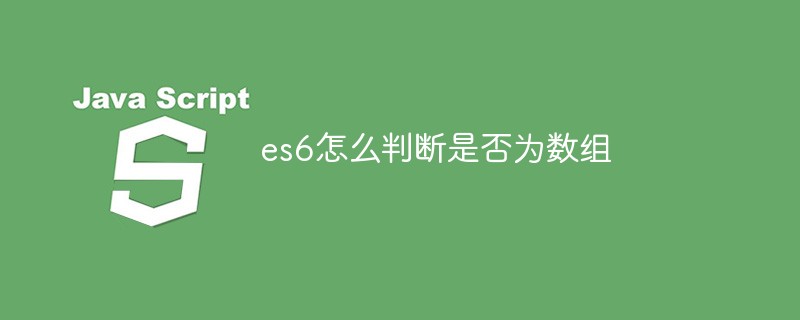 es6怎么判断是否为数组Apr 25, 2022 pm 06:43 PM
es6怎么判断是否为数组Apr 25, 2022 pm 06:43 PM在es6中,可以利用“Array.isArray()”方法判断对象是否为数组,若判断的对象是数组,返回的结果是true,若判断对象不是数组,返回的结果是false,语法为“Array.isArray(需要检测的js对象)”。
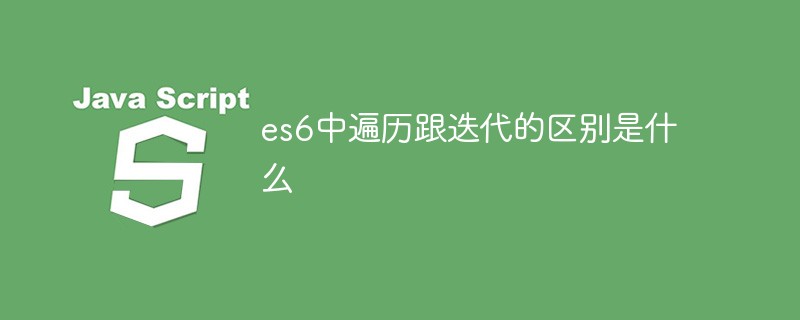 es6中遍历跟迭代的区别是什么Apr 26, 2022 pm 02:57 PM
es6中遍历跟迭代的区别是什么Apr 26, 2022 pm 02:57 PMes6中遍历跟迭代的区别是:遍历强调的是要把整个数据依次全部取出来,是访问数据结构的所有元素;而迭代虽然也是依次取出数据,但是并不保证取多少,也不保证把所有的数据取完,是遍历的一种形式。
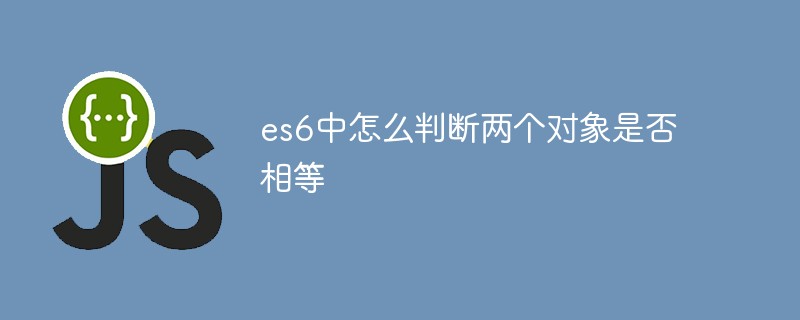 es6中怎么判断两个对象是否相等Apr 19, 2022 pm 03:34 PM
es6中怎么判断两个对象是否相等Apr 19, 2022 pm 03:34 PM在es6中,可用Object对象的is()方法来判断两个对象是否相等,该方法检测两个变量的值是否为同一个值,判断两个对象的引用地址是否一致,语法“Object.is(对象1,对象2)”;该方法会返回布尔值,若返回true则表示两个对象相等。
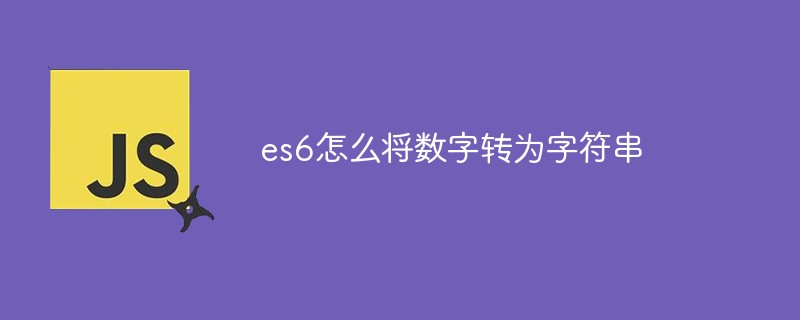 es6怎么将数字转为字符串Apr 19, 2022 pm 06:38 PM
es6怎么将数字转为字符串Apr 19, 2022 pm 06:38 PM转换方法:1、利用“+”给数字拼接一个空字符,语法“数字+""”;2、使用String(),可把对象的值转换为字符串,语法“String(数字对象)”;3、用toString(),可返回数字的字符串表示,语法“数字.toString()”。
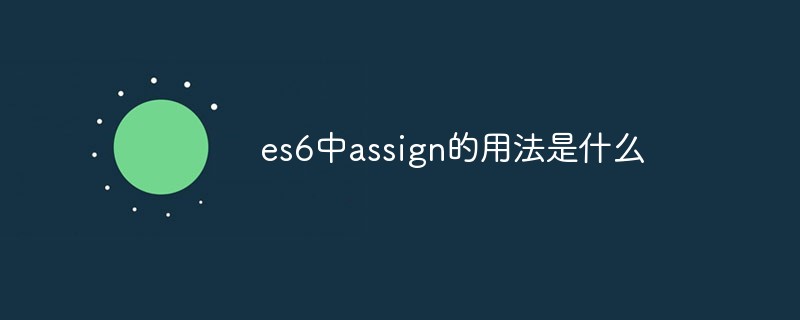 es6中assign的用法是什么May 05, 2022 pm 02:25 PM
es6中assign的用法是什么May 05, 2022 pm 02:25 PM在es6中,assign用于对象的合并,可以将源对象的所有可枚举属性复制到目标对象;若目标对象与源对象有同名属性,或多个源对象有同名属性,则后面的属性会覆盖前面的属性,语法为“Object.assign(...)”
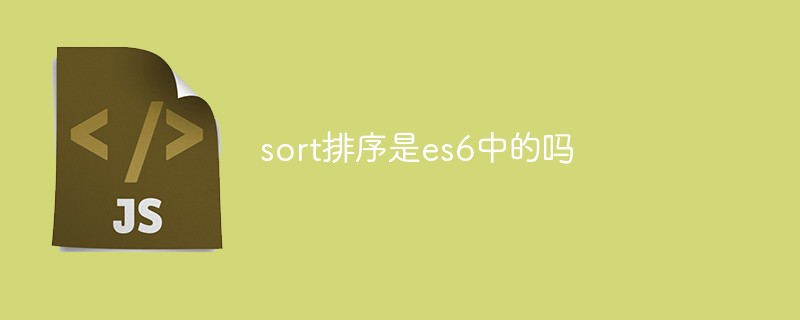 sort排序是es6中的吗Apr 25, 2022 pm 03:30 PM
sort排序是es6中的吗Apr 25, 2022 pm 03:30 PMsort排序是es6中的;sort排序是es6中用于对数组的元素进行排序的方法,该方法默认不传参,按照字符编码顺序进行排序,排序顺序可以是字母或数字,并按升序或降序,语法为“array.sort(callback(a,b))”。
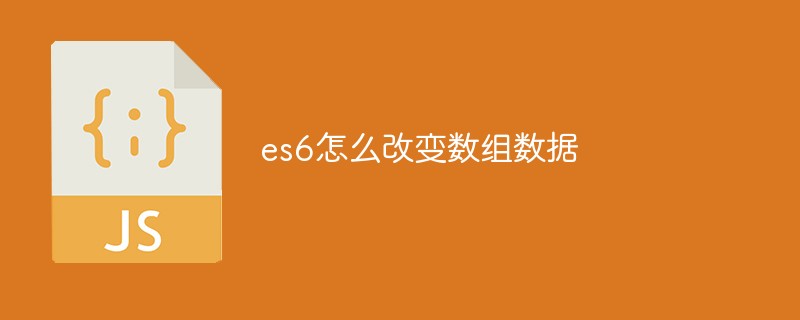 es6怎么改变数组数据Apr 26, 2022 am 10:08 AM
es6怎么改变数组数据Apr 26, 2022 am 10:08 AM改变方法:1、利用splice()方法修改,该方法可以直接修改原数组的内容,语法为“数组.splice(开始位置,修改个数,修改后的值)”;2、利用下标访问数组元素,并重新赋值来修改数组数据,语法为“数组[下标值]=修改后的值;”。
 import as在es6中的用法是什么Apr 25, 2022 pm 05:19 PM
import as在es6中的用法是什么Apr 25, 2022 pm 05:19 PM在es6中,import as用于将若干export导出的内容组合成一个对象返回;ES6的模块化分为导出与导入两个模块,该方法能够将所有的导出内容包裹到指定对象中,语法为“import * as 对象 from ...”。


Hot AI Tools

Undresser.AI Undress
AI-powered app for creating realistic nude photos

AI Clothes Remover
Online AI tool for removing clothes from photos.

Undress AI Tool
Undress images for free

Clothoff.io
AI clothes remover

AI Hentai Generator
Generate AI Hentai for free.

Hot Article

Hot Tools

SublimeText3 English version
Recommended: Win version, supports code prompts!

SAP NetWeaver Server Adapter for Eclipse
Integrate Eclipse with SAP NetWeaver application server.

WebStorm Mac version
Useful JavaScript development tools

SublimeText3 Linux new version
SublimeText3 Linux latest version

MinGW - Minimalist GNU for Windows
This project is in the process of being migrated to osdn.net/projects/mingw, you can continue to follow us there. MinGW: A native Windows port of the GNU Compiler Collection (GCC), freely distributable import libraries and header files for building native Windows applications; includes extensions to the MSVC runtime to support C99 functionality. All MinGW software can run on 64-bit Windows platforms.







